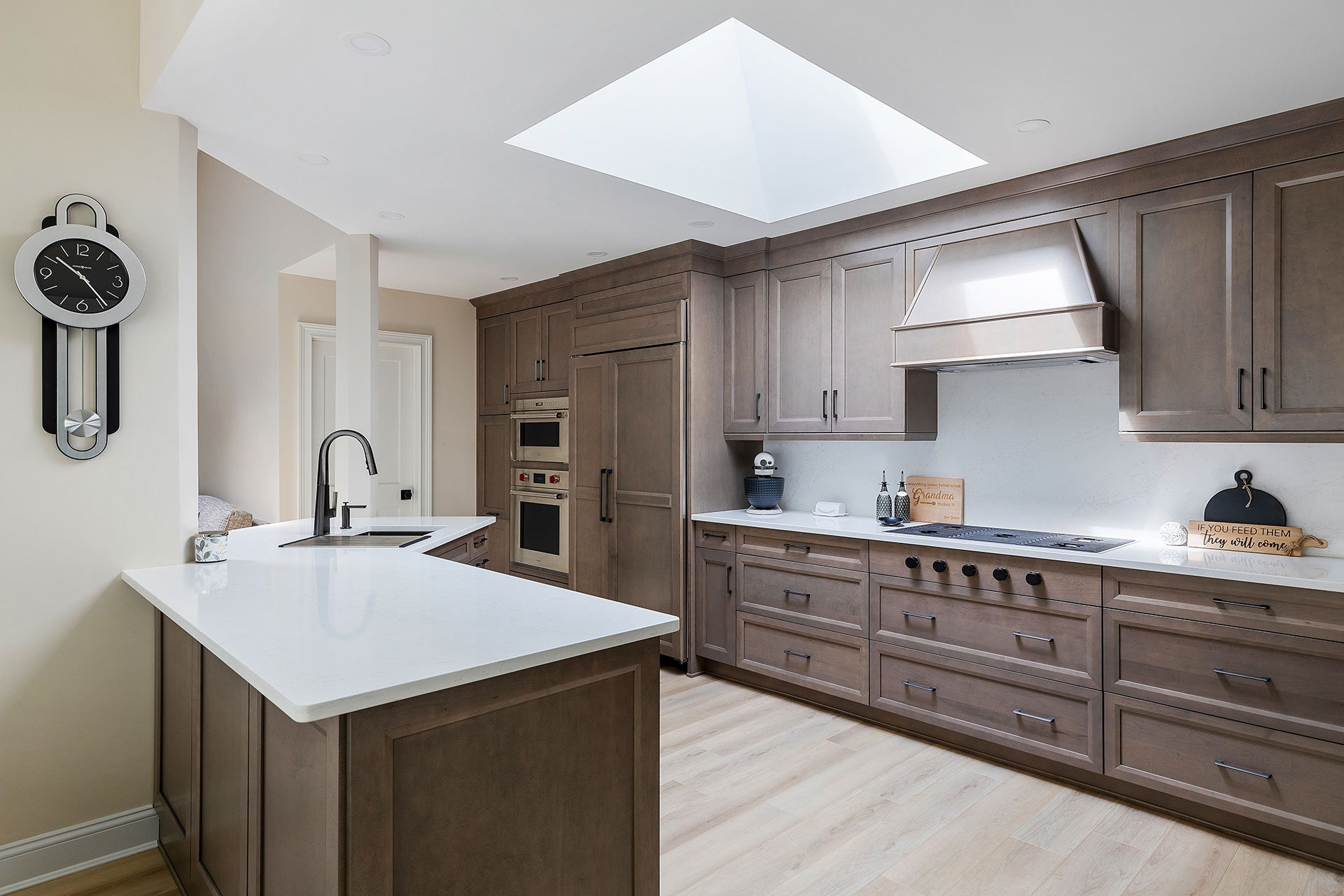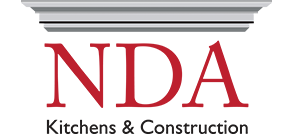
Your Long Island kitchen isn’t just the room where you prepare meals and finesse your favorite recipes. As the place where everyone gathers to swap stories and share news of day, it’s the hub and heart of your home. Chances are that your kitchen sees more foot traffic than any other room in your home, so when it comes to replacing your flooring, you need a material that can take spills, splashes and constant use in stride. In addition to all the functional aspects of kitchen flooring, there are style factors that come into play as well. The following tips can help guide you towards the ideal floor selection.
Functional Considerations
A new kitchen floor offers you the opportunity to elevate the look of your Long Island kitchen, but there’s more to consider than personal style when it comes to selecting the best material. For your long-term satisfaction, it’s critical to address these practical questions too:
- Is the material impervious to water?
- Is it resistant to stains?
- How does the material feel underfoot?
- What are the maintenance requirements?
- How long will the flooring last?
Solid Hardwood Flooring
Whether laid out in rustic planks or in narrow strips, natural wood offers a feeling of cozy warmth that few other materials can rival. When properly installed, sealed and maintained, you can enjoy the beauty of wood floors even in a spill-prone environment like a kitchen. Hardwood can be stained to achieve a darker hue, treated to give the wood a bleached look or installed in its natural color.
Pros: With periodic refinishing, solid wood floors can keep their great looks for as long as you own your home. With so many species, finishes and sizes to choose from, it’s easy to find a design that fits your personal taste to perfection. Best of all, natural wood has a timeless elegance that never goes out of style.
Cons: Even when sealed to keep them impervious to water, wood floors require regular care to keep them looking their best. Tracked-in dirt can scuff the finish, and stains can form if spills aren’t wiped up right away.
Natural Stone Floors
Whether made from granite, marble, limestone, slate or travertine, natural stone tiles will give your Long Island kitchen a truly custom look. That’s because every slab of stone has its own unique colors and patterns. Natural stone is available in every tint and shade of the rainbow, offering you unlimited design options.
Pros: As a material favored among the well-to-do for centuries, natural stone adds instant elegance to any kitchen. Finished stone requires little day-to-day maintenance, so it’s great for busy households too.
Cons: As tough as stone is, it’s a porous material, which means it needs to be sealed periodically to keep it water-tight. While not usually a problems with hard stones like granite, softer stones like marble and travertine are prone to scratches and chips that can require professional sanding services to resolve.
Ceramic Tiles
Available in virtually any shape, size, style and color, ceramic tiles are among the most popular choices for kitchen flooring. Their versatility makes them ideal when you want a patterned floor too. Whether it’s a border of hand-painted artisan tiles or an overall basket-weave pattern, ceramic tiles can turn a plain kitchen floor into style statement that showcases your creativity.
Pros: Tough and durable, ceramic tiles shrug off spills and stains with ease. The surface can take a vigorous scrubbing and come out at the other end no worse for wear. The modular nature of ceramic tiles means that even if a single tile cracks, it’s a relatively easy job to replace it.
Cons: Keeping the grout looking clean can be a chore with ceramic tiles, but there a sealants and special cleaners available that can simplify the job. Porosity ratings matter too. Tiles rated semi-vitreous or non-vitreous won’t provide you with the moisture resistance you need for your kitchen floor.
Other flooring options for your Long Island kitchen include synthetic materials like vinyl, linoleum and laminates as well as natural products like cork and bamboo. The broad selection of materials available ensures that you’ll find the product that best suits the functional demands and the unique style of your busy kitchen.
SHARE
Post a Comment
You must be logged in to post a comment.


